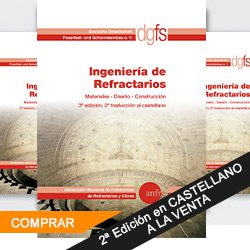Sales volumes to steel and industrial end-markets increased last year amid a scarcity of main refractories raw materials, such as dead-burned magnesia and fused magnesia.
Growth in steel output and strong performance in refractories markets drove revenues and earnings for refractory group RHI Magnesita in its adjusted financial results for 2017, although the company highlighted continuing issues in raw materials supply.
The group – which was formed through the merger of Austria-based RHI AG and Brazil’s Magnesita Refratarios SA, and was listed on London’s Stock Exchange in October last year – benefited from a rebound in demand for refractories arising from global growth in steel output.
Adjusted pro-forma revenue for the group reached €2.68 billion ($3.30 billion) in 2017, up by 11% from the previous year. The results incorporate 10 months’-worth of financial results for RHI but only two months from both RHI Magnesita and Magnesita Refratarios.
Adjusted pro-forma earnings before interest, taxes, depreciation and amortization (Ebitda) rose by 39% in 2017 to €304.1 million. The performance confirmed an uptrend seen in the company’s financial figures for JanuarySeptember 2017, released last November.
The company pointed to «a more favorable market environment» supporting «sales growth in both [its] steel and industrial divisions.» «The robust performance was largely driven by the 5.3% increase in world steel production in 2017,» RHI Magnesita said.
Sales by the steel division (refractories used in steelmaking) increased by 14% in 2017 year-on-year, while those in the industrial division grew by almost 3% in the same comparison. Growth in the latter division was led by cement, especially in the second half of the year.
«The raw material crisis in China also influenced the demand for refractories, because some customers anticipated orders to secure supply,» the company added. RHI Magnesita highlighted the difficult situation in raw materials supply, following the drastic slashing of production volumes of key refractory minerals by China during 2017.
The cutbacks more than doubled the prices of the two main magnesite-based raw materials in refractories – dead-burned magnesia (DBM) and fused magnesia (FM) – in 2017, the company said. But its vertical integration structure – the company operates its own magnesite and dolomite mines – helped it to secure supplies and «remain competitive in costs,» it added.
Tightness in magnesia supply pushed prices of high-grade DBM higher in early March 2018. The price of DBM 97.5% MgO lump increased to $1,100-1,400 per tonne fob China on March 6, from $630-740 per tonne a week earlier.
And the price of 94-95% MgO material rose on the same day to $680-700 per tonne fob China from $385-470 per tonne. FM prices adjusted downward in early March, but remained much higher than they had been for most of 2017.
FM 97% MgO (Ca:Si 1:1), lump, was trading at $1,150-1,250 per tonne fob China, while the price of FM 97% MgO (Ca:Si 2:1), lump, was $1,250-1,400 per tonne. RHI Magnesita brings together a pool of more than 50 facilities globally, with a strong presence in the Americas, Europe and Asia, as well as direct access to its own raw materials.



